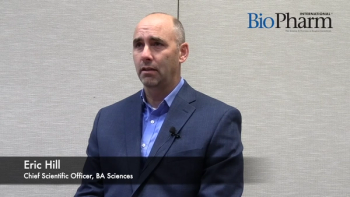
- BioPharm International-08-01-2006
- Volume 19
- Issue 8
Successful Bioreactor Installation: What it Takes
Understand your company's requirements, define responsibilities,and manage your team effectively.
In April 2006, Cytovance Biologics LLC (Oklahoma City, OK), a clinical-scale contract manufacturing and process development organization (CMO), finished installing two new bioreactor systems into its custom-designed multiproduct cGMP contract manufacturing facility. The installation was the culmination of a difficult endeavor that began in September 2005, when the bioreactors were ordered, and ended in March 2006, when the systems were delivered.
This article describes the importance of incorporating critical design elements into the quotation before placing the order, clearly defining roles and responsibilities, and managing the project effectively. The installation was completed on time and on budget without any project change orders.
UNDERSTANDING DESIGN OBJECTIVES
Cytovance Biologics required two mammalian cell-culture bioreactors for its newly constructed, early clinical phase cGMP contract manufacturing facility at the Presbyterian Health Foundation Research Park in Oklahoma City, OK. One hundred liter and 500 L mammalian cell-culture stainless steel units were specified for separate manufacturing trains in dedicated suites. They needed to be operational by the summer of 2006 to support customer cGMP production batches.
Because Cytovance Biologics is a multiproduct contract manufacturer, there was no single product or process to tailor the bioreactor systems to. It was necessary to accommodate a wide range of mammalian cell-culture products and processes to maintain the company's ability to bid on a wide variety of contract proposals. Many design issues were addressed early on, such as the sizing of the mass flow controllers, the addition of baffles to the bioreactor vessels, and whether the bioreactors would be capable of running perfusion processes.
The cGMP facility design was completed before the bioreactor design, so it was necessary for the bioreactor system design to accommodate facility restrictions on dimensions and utility services. Cost and timelines were also concerns because a CMO must carefully control expenditures. An aggressive budget was set. In addition, it was important that the bioreactors be installed and validated as quickly as possible to accelerate the acquisition of customer projects and associated revenue generation.
Quick Recap
SELECTING VENDORS
We solicited competitive quotes from three vendors and selected Sartorius BBI systems of Bethlehem, PA (SBBI,
Finally, we conducted a one-day, face-to-face meeting with Sartorius to tour their facility and identify final bioreactor specifications.
MANAGING THE TEAM
Once we formally placed the order, we established roles, responsibilities, and key contacts for each team. At Cytovance, I was the main point of contact. Steven D. Perry, vice president of manufacturing operations, was responsible for final decisions, and Debra Greiner-Powell director of quality systems, was responsible for quality assurance on the customer side. Steven J. Ruhl, vice president of Certified Facilities, was also a key consultant to the bioreactor project team.
At SBBI, Stanley Hawrylo, senior project engineer, was the main point of contact and project manager. Kenneth Clapp, senior vice president, manufacturing and operations, was responsible for final decisions, and David Koiro, quality control supervisor, managed quality control on the vendor side.
We instituted weekly update meetings by phone, where we took detailed minutes and established a formalized system for tracking action items. The meetings were invaluable—they provided a forum for consistent communication for the duration of the project. The minutes also created a historical record of the project's development, which was reviewed whenever disputes arose. Project teams from Cytovance Biologics and SBBI participated in the weekly meetings throughout the course of the project.
Additionally, SBBI developed a detailed project schedule with descriptions, dates, assignments, and percentage-completion metrics for each task. The detailed schedule, which incorporated approval times for documents, was essential to maintain the aggressive delivery date.
REVIEWING DESIGNS
During the first few weeks of the project, SBBI generated several key documents for our review and approval. The two most critical were the Piping and Instrumentation Diagrams (P&IDs) and the Master Component Lists (MCL). SBBI required our approval before ordering components with the longest lead time, including the actual bioreactor vessels.
The P&IDs were reviewed to ensure that the proposed design met our requirements. We confirmed that utilities were sized properly, flow paths were correct and sterilizable (as required), components were clearly labeled, and that the vessel had the required ports for additional feeds and instrumentation.
The MCL identified specific manufacturers and materials that would be used in system fabrication. For example, If Cytovance Biologics had a preferred supplier for diaphragm valves (to minimize the different types of spare diaphragms to keep in stock), or supplier for pH and DO probes, those concerns would be addressed in the MCL.
After we approved the P&IDs and the MCL, SBBI issued the functional requirement specifications (FRS) for our review and approval. The FRS provided detailed descriptions for how the bioreactor control software would handle control loops and sequences. The control system included with the bioreactors is a proprietary software developed by SBBI, entitled DCU3.
Control loops, such as pH and the cascade loop for dissolved oxygen (DO), were spelled out in detail within the FRS. Sequences such as steam-in-place (SIP) and clean-in-place (CIP) were also detailed. The FRS listed available alarm functions for the various parameters and readings that are monitored. In addition, the FRS listed valve tables to help Cytovance Biologics employees generate standard operating procedures.
SBBI then issued fabrication arrangement drawings for our review. These documents provided a means for reviewing the system footprint and height, functionality of operator manipulations, and the ability to tie utility connections into the facility.
Next, SBBI issued electrical wiring drawings. These provided the schematic for understanding exactly how the bioreactor systems and various digital and analog I/O, as well as power supplies, were connected.
Factory Acceptance Test (FAT) documents detailed the series of tests to be performed to ensure that the bioreactor system was fabricated per the approved drawings and MCL, and that the system was functionally sound (per the FRS with respect to performance) before shipment was approved.
FAT activities included verification of all drawings, MCL verification, I/O check, calibration checks, alarm testing, control loop checks, sequence testing, a riboflavin challenge, and a sterile media hold challenge. Any non-conformances between expected test results per the approved documents and what was actually verified in the field had to be resolved to our satisfaction before the system could be cleared for shipment.
SBBI's timely generation of these documents, and Cytovance Biologics's prompt review helped maintain the schedule. Weekly project meetings also provided a useful forum for addressing any questions and comments about the documents, from initial generation to final review and approval.
INSPECTING SYSTEMS
Inspection of the systems during their fabrication also reassured us that they would meet our expectations when delivered. Cytovance Biologics was on site to supervise and observe the vessel FAT (at the vessel manufacturer, T&C Stainless in Mount Vernon, MO,
The vessel FAT was a one-day test for both the 100 L and 500 L vessels. SBBI verified that they matched specifications per the official vessel P&ID. Test verifications performed included the following:
- Port sizing, angles, and position
- Drainability to ensure no pooling at the bottom of the vessels or any ports
- Interior and exterior finish with a calibrated profilometer
- Sprayball coverage test
After the vessel FAT was executed, SBBI prepared a final report identifying any nonconformances that the vessel manufacturer needed to address before SBBI would authorize shipment.
The system FAT was a three-week test SBBI conducted to verify the fabrication and functionality of the bioreactor systems. Members of the Cytovance team traveled to Bethlehem, PA for the duration of the FAT to supervise and observe the process.
Two problems initially threatened to delay the FAT process for the 500 L bioreactor system. First, the vessel arrived from the manufacturer with shipping damage. Second, there were difficulties in ensuring that all the 500 L agitator impellors were delivered in time.
Cytovance Biologics and SBBI worked creatively to avoid delays and keep the project on schedule. The shipping damage to the 500 L vessel consisted of a dent to the vessel jacket, requiring jacket replacement. Functionally, this did not affect any of the FAT tests, so we first decided to continue with the FAT and repair the vessel after testing. It was more economical time-wise to ship the vessel from Pennsylvania to Missouri (where it could be turned around in less than one day) on its way to Oklahoma, rather than delay the FAT schedule.
Second, we decided that having all agitator impellors installed was not functionally important for most of the FAT execution. The second impellor that SBBI was waiting to receive was required only for the riboflavin and sterile media hold challenges. This allowed SBBI to continue testing the 500 L system for one-and-a-half weeks before the last impellor arrived, which preserved the original schedule.
The system FAT proved to be a critical test. By performing an extremely thorough inspection of system fabrication and functionality, non-conformances that were found could be corrected on site at the SBBI manufacturing facility. Various flaws in the programming, piping slopes, and CIP flow paths were easily addressed during the FAT process.
Additionally, Cytovance Biologics had also ordered a CIP skid that was ready for testing at the same time as the bioreactor systems. This enabled us to test the communication between the CIP skid and each bioreactor system during the FAT and verify that the systems communicated as designed.
At the end of the FAT, we developed a formal list of action items required to be addressed before shipment. The FAT was successful in ensuring that Cytovance Biologics received functionally sound bioreactor systems that were fabricated according to approved specifications and documented any nonconformances that were found.
INSTALLATION AND START-UP
The 100 L bioreactor system arrived on site at our facilities in Oklahoma City on March 20. The 500 L bioreactor system arrived on March 27 and the vessel followed closely behind (after stopping through Missouri for the jacket repair). SBBI was scheduled for two visits to complete the project: the first for installation of the bioreactor system and the second for system start-up training.
Cytovance Biologics rapidly executed system set-up and tie-in to the utility systems in each cell-culture suite, to allow SBBI to perform their installation functions on time. The installation included reassembly of the bioreactor systems, leveling of each system, and assurance that the vessels were correctly mounted on the load cells .
SBBI returned for the second visit two weeks later to perform system start-up training. SBBI provided instruction on operation of the DCU3 controller, performed some system checks, and tested sequences.
When SBBI completed the formal installation and start-up training, Cytovance was ready to begin formal commissioning and qualification of the bioreactor systems. The 100 L and 500 L bioreactor systems had been ordered, fabricated, delivered, and installed successfully on time and on budget.
LESSONS LEARNED
This project represented hard work, successful planning, and creative solutions from the entire bioreactor project team. When managing a large project, there are certain guidelines a project manager should implement to ensure the project goes as smoothly as possible.
User Requirement Specification (URS) Time constraints meant that a formal URS was not generated as part of this project. However, we highly recommend developing a formal URS. This document defines detailed specifications of what the user requires for a piece of equipment, or a system, and includes piping, instrument, and software control requirements. The URS is then submitted to vendors to solicit proposals for systems that meet user requirements.
Defined Project Team Defining roles and responsibilities is critical to maintain order within a project team. It facilitates both task assignments and decision-making. It is also key to establish a single main point of contact for each party. This single point of contact is responsible for ensuring that all required team members are involved in different tasks. The contact is also responsible for ensuring that one part of the team does not unknowingly implement a design change that impacts another part of the design (i.e., a design engineer making a change to the piping on a certain flow path that impacts how a software control function needs to be sequenced).
Detailed Schedule Developing a detailed schedule enables the project team to track the progress of the project and identify critical path tasks. Assigning responsibility for each task and regularly updating percent completions helps a project team address any potential problems on critical path items early on. Any potential negative impacts to the overall project schedule can be mitigated.
Design Review A careful review of all design documents is necessary to guarantee that the system meets all requirements set forth in the URS. Many critical design elements and mundane details can be addressed at this time, such as control system design schemes, fabrication arrangements, and component specifications. The design review is essential in helping to ensure that the system will meet the user's requirements.
Factory Acceptance Testing Design reviews can identify potential problems and initiate solutions, but there is no substitute for hands-on experience and real-life testing of equipment and systems through a FAT. A FAT can reveal flaws in a design that appears perfect on paper. It is always easier to address functional or fabrication issues by testing equipment when it is on site at a manufacturer, before it is shipped to the customer. A thorough factory acceptance test is critical to help make certain that the system performs as the customer requires. The customer should also, be on site, if possible, to witness the factory acceptance testing to ensure the equipment or system meets the customer's satisfaction.
Communication A successful project team is like any other relationship. It is predicated on an open, honest, and constant line of communication. Frequent project meetings and updates are critical to keeping a project moving forward. Many potential miscommunications and misunderstandings can be quickly ironed out, and constant communication keeps both sides of the project team on the same page and working in unison down the same paths to attain a common goal.
Byron A. Spurr is a project engineer at Cytovance Biologics LLC, 840 Research Parkway, Ste. 400, Oklahoma City, OK 73104, Tel 405.319.8310 Fax 405. 319.8339
Articles in this issue
over 19 years ago
Regulatory Beat: Biologics Oversight Challenges Federal Regulatorsover 19 years ago
StreetTalk: Transition at the Fed: From Greenspan to Bernankeover 19 years ago
Biopharmaceuticals: Approval Trends in 2005over 19 years ago
Applying Process Analytical Technology to Biotech Unit OperationsNewsletter
Stay at the forefront of biopharmaceutical innovation—subscribe to BioPharm International for expert insights on drug development, manufacturing, compliance, and more.




